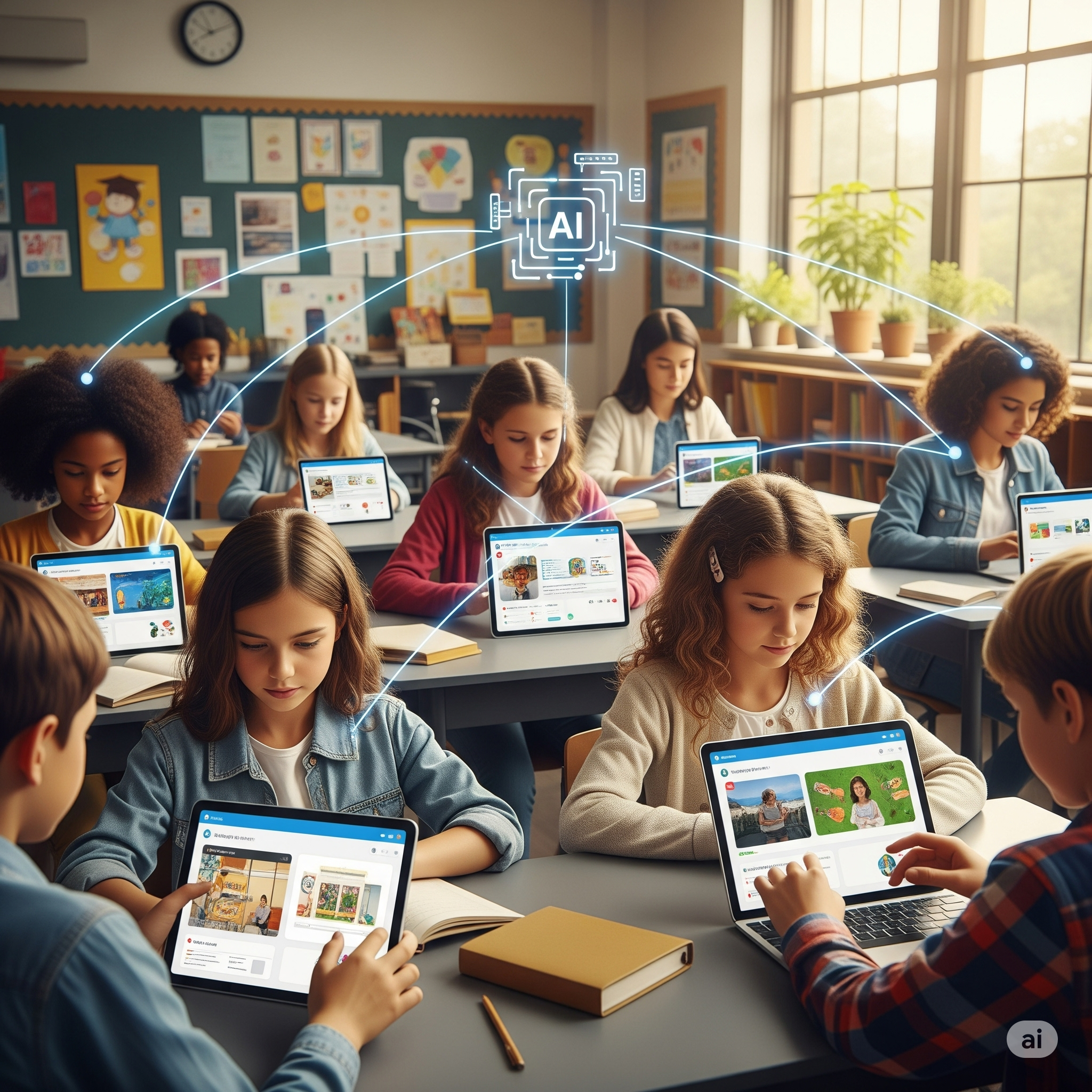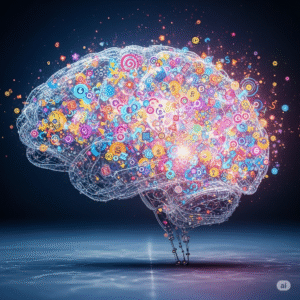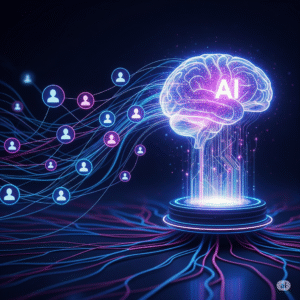The quest for effective education has always centered around meeting the unique needs of each learner. Traditional educational models, with their standardized curricula and one-size-fits-all approach, often fall short of this ideal. However, a transformative shift is underway, powered by Artificial Intelligence. Adaptive learning AI is revolutionizing the educational landscape by creating personalized learning experiences that dynamically adjust to individual student progress, preferences, and challenges. This innovative approach promises to unlock the full potential of every student, fostering deeper understanding, greater engagement, and improved learning outcomes.
Imagine a learning journey where the content, pace, and even the mode of instruction morph in real-time based on how well a student is grasping the material. This is the core of adaptive learning AI. By analyzing a student’s interactions, performance on tasks, and even their learning behaviors, AI algorithms can tailor the educational experience to optimize comprehension and retention. This move towards individualized instruction marks a significant leap forward, addressing the inherent limitations of static educational frameworks and paving the way for a more equitable and effective future of learning.
The Limitations of Traditional Education and the Rise of Personalization
The conventional classroom often operates on the principle of teaching to the average student. This inevitably leaves some students feeling lost or unchallenged. Those who grasp concepts quickly may become bored and disengaged, while others who require more time or different explanations can fall behind, leading to frustration and a potential loss of interest in learning. Teachers, despite their best efforts, often lack the bandwidth to provide truly individualized attention to every student in a large classroom setting.
The rise of adaptive learning AI offers a scalable solution to this challenge. By leveraging the power of data analytics and intelligent algorithms, these systems can continuously assess a student’s understanding and adapt the learning path accordingly. This dynamic adjustment ensures that students are always presented with material that is appropriately challenging – neither too easy nor too difficult – fostering a state of optimal learning known as the “zone of proximal development.” This level of personalization not only enhances academic outcomes but also plays a crucial role in AI student engagement.
How Adaptive Learning AI Works: A Dynamic Educational Ecosystem
At its heart, adaptive learning AI functions through a continuous cycle of assessment, analysis, and adjustment. When a student interacts with a learning platform powered by adaptive AI, their actions generate valuable data. This data includes:
- Performance on Activities: Scores on quizzes, assignments, and interactive exercises.
- Time Spent on Tasks: How long a student engages with specific content or attempts to solve problems.
- Interaction Patterns: The types of resources a student prefers (e.g., videos, text, simulations), the number of attempts they make, and the hints they utilize.
- Areas of Difficulty: Specific concepts or skills where a student consistently struggles.
AI algorithms analyze this data in real-time to build a detailed profile of each student’s learning progress and preferences. Based on this analysis,
the adaptive learning AI system then makes adjustments to the learning path, such as:
- Presenting Remedial Content: If a student struggles with a particular concept, the system might offer additional explanations, simpler examples, or practice exercises to reinforce understanding before moving on.
- Accelerating Learning: For students who demonstrate mastery quickly, the system can introduce more advanced topics or challenging problems to keep them engaged and progressing at their own pace.
- Recommending Different Learning Resources: If a student isn’t responding well to a particular format (e.g., text-based explanations), the AI might suggest a video tutorial or an interactive simulation to explain the same concept in a different way.
- Adjusting the Difficulty Level: The system can dynamically modify the difficulty of questions and tasks based on a student’s recent performance, ensuring they are neither overwhelmed nor bored.
This continuous adaptation creates a highly personalized and engaging learning experience, directly contributing to improved AI student engagement and better learning outcomes. The principles behind adaptive learning AI also find applications in other fields, such as AI for fitness, where personalized workout plans adjust based on an individual’s progress and performance.
Real-World Applications: Adaptive Learning AI in Action
The theoretical benefits of adaptive learning AI are being realized in various educational settings and across different subject areas.
One prominent example is Khan Academy, which utilizes adaptive practice exercises in mathematics. The platform assesses a student’s understanding of a concept and provides a personalized set of problems tailored to their current skill level. If a student struggles, the system offers hints and simpler practice questions. If they demonstrate mastery, they are presented with more challenging material. This adaptive approach has been shown to significantly improve student performance and confidence in math.
Another compelling case is ALEKS (Assessment and Learning in Knowledge Spaces), a web-based, AI-powered assessment and learning system for mathematics, chemistry, statistics, and business courses. ALEKS uses an initial adaptive assessment to determine a student’s existing knowledge state and then provides a personalized learning path focused on the concepts they are ready to learn. The system continuously monitors progress and adjusts the learning path accordingly, ensuring students build a strong foundation of knowledge.
Case Study: Empowering Students with Personalized Math Education
Consider “Mathnasium,” a supplementary math education franchise. Recognizing the diverse learning needs of their students, Mathnasium integrated an adaptive learning AI platform into their curriculum. Previously, instructors relied primarily on standardized worksheets and manual assessments to gauge student progress. This often meant that some students weren’t being challenged enough, while others struggled to keep up.
By implementing the AI-powered system, Mathnasium was able to provide each student with a highly individualized learning plan. The system began with an adaptive diagnostic assessment to pinpoint each student’s specific knowledge gaps and strengths. Based on this assessment, the AI generated a unique learning path with targeted activities and exercises. As students worked through the material, the system continuously monitored their performance, adjusting the difficulty and introducing new concepts only when mastery was demonstrated. Instructors received real-time data on student progress and areas of difficulty, allowing them to provide focused support and personalized guidance.
The results were significant. Mathnasium centers using the adaptive learning AI platform reported increased student engagement, faster progress in mastering mathematical concepts, and higher levels of student confidence. Parents also noted a greater understanding of their child’s specific learning needs and a more tailored approach to their math education. This case study highlights how adaptive learning AI can transform supplemental education, providing a more effective and engaging learning experience for every student.
The Intersection of AI in Education and Business Intelligence
The principles behind adaptive learning AI share similarities with how businesses utilize AI for personalization and optimization. In the business world, companies leverage AI-powered business intelligence tools to analyze customer data, understand individual preferences, and deliver tailored products, services, and marketing messages.
For example, e-commerce platforms like Amazon use AI algorithms to analyze browsing history, purchase patterns, and product reviews to provide personalized recommendations to each user. This not only enhances the customer experience but also drives sales. Similarly, streaming services like Netflix use AI to suggest movies and shows based on viewing history, leading to increased user engagement and retention.
Consider “MarketWise Analytics,” a fictional business intelligence firm. They help companies implement AI-driven personalization strategies. Their AI tools analyze vast amounts of customer data to segment audiences, predict future behavior, and optimize marketing campaigns for maximum impact. Just as adaptive learning AI tailors educational content to individual students, MarketWise Analytics helps businesses tailor their offerings to individual customers, demonstrating the broad applicability of AI in creating personalized and effective experiences.
Key AI Tools Powering Adaptive Learning
The development and implementation of adaptive learning AI rely on a variety of sophisticated AI tools and platforms. While some are specifically designed for education, others are general-purpose AI technologies that can be adapted for learning applications.
- Intelligent Tutoring Systems (ITS): These AI-powered systems provide personalized guidance and feedback to students as they learn, often in specific subject areas. They can diagnose student errors, offer targeted hints, and adapt the learning path based on individual needs. Many adaptive learning AI platforms incorporate features of ITS.
- Learning Management Systems (LMS) with AI Capabilities: Modern LMS platforms are increasingly integrating AI features to personalize the learning experience. These features can include adaptive content delivery, automated feedback, and personalized learning recommendations. Platforms like Blackboard Learn with its “Ally” feature, and others are moving in this direction.
- AI-Powered Assessment Tools: These tools can analyze student performance data to identify learning gaps and inform adaptive learning pathways. Platforms that use item response theory (IRT) and other psychometric models can provide highly granular insights into student understanding.
- Machine Learning Platforms: Developers of adaptive learning AI systems utilize machine learning platforms like TensorFlow (Google) (https://www.tensorflow.org/) and PyTorch (Meta) (https://pytorch.org/) to build and train the algorithms that power personalization.
- Natural Language Processing (NLP) Tools: NLP is crucial for analyzing student text responses, providing feedback on writing, and even creating adaptive conversational learning experiences, as seen in some AI-powered language learning applications. OpenAI’s ChatGPT (https://chat.openai.com/) can be adapted for educational purposes, though ethical considerations must be carefully addressed.
These tools and technologies are constantly evolving, driving further advancements in the capabilities and effectiveness of adaptive learning AI.
Implementing Adaptive Learning: A Step-by-Step Approach
For educational institutions or individual educators looking to incorporate adaptive learning AI, here are some beginner-friendly steps and considerations:
- Identify Specific Learning Goals: Determine the specific subjects or skills where adaptive learning could have the most significant impact. Start with areas where student learning outcomes are inconsistent or where personalization is particularly challenging.
- Explore Available Adaptive Learning Platforms: Research and evaluate different adaptive learning AI platforms and tools based on your specific needs, budget, and technical infrastructure. Consider factors like ease of use, content coverage, integration capabilities, and data privacy policies.
- Pilot with a Small Group: Begin by implementing the chosen platform with a small group of students or in a single course to assess its effectiveness and identify any challenges before a wider rollout.
- Provide Teacher Training: Ensure that educators are adequately trained on how to use the adaptive learning platform and how to interpret the data it provides. Emphasize that AI is a tool to augment their teaching, not replace it.
- Monitor Student Progress and Provide Human Support: While adaptive learning AI provides personalized pathways, human interaction remains crucial. Teachers should regularly monitor student progress, provide individualized support, and address any learning challenges that the AI system may not be able to handle alone.
- Gather Feedback from Students and Teachers: Collect feedback from both students and teachers about their experiences with the adaptive learning platform. Use this feedback to refine your implementation strategy and optimize the learning experience.
- Iterate and Scale Gradually: Based on the results of the pilot and the feedback received, gradually scale the implementation of adaptive learning AI to other courses or student groups. Continuously monitor and evaluate its impact on student learning outcomes and AI student engagement.
Beyond Academics: The Versatility of Adaptive Approaches
The principles of adaptation and personalization extend beyond the realm of formal education. As mentioned earlier, AI for fitness leverages similar concepts to create tailored workout regimens and track progress. In professional development, adaptive learning AI can deliver customized training modules based on an employee’s role, skill level, and learning pace, ensuring more effective knowledge acquisition and skill development. Even in fields like customer service, AI-powered chatbots can adapt their responses based on the customer’s questions and the context of the interaction, leading to more efficient and satisfying resolutions.
The underlying power of adaptive systems lies in their ability to cater to individual needs in a dynamic and responsive manner. In education, this translates to a more engaging, effective, and equitable learning experience for every student. As adaptive learning AI continues to evolve, it holds the key to unlocking the full potential of learners and shaping a future where education is truly personalized.
Wellness Redefined: AI Applications for Personalized Fitness and Nutrition



